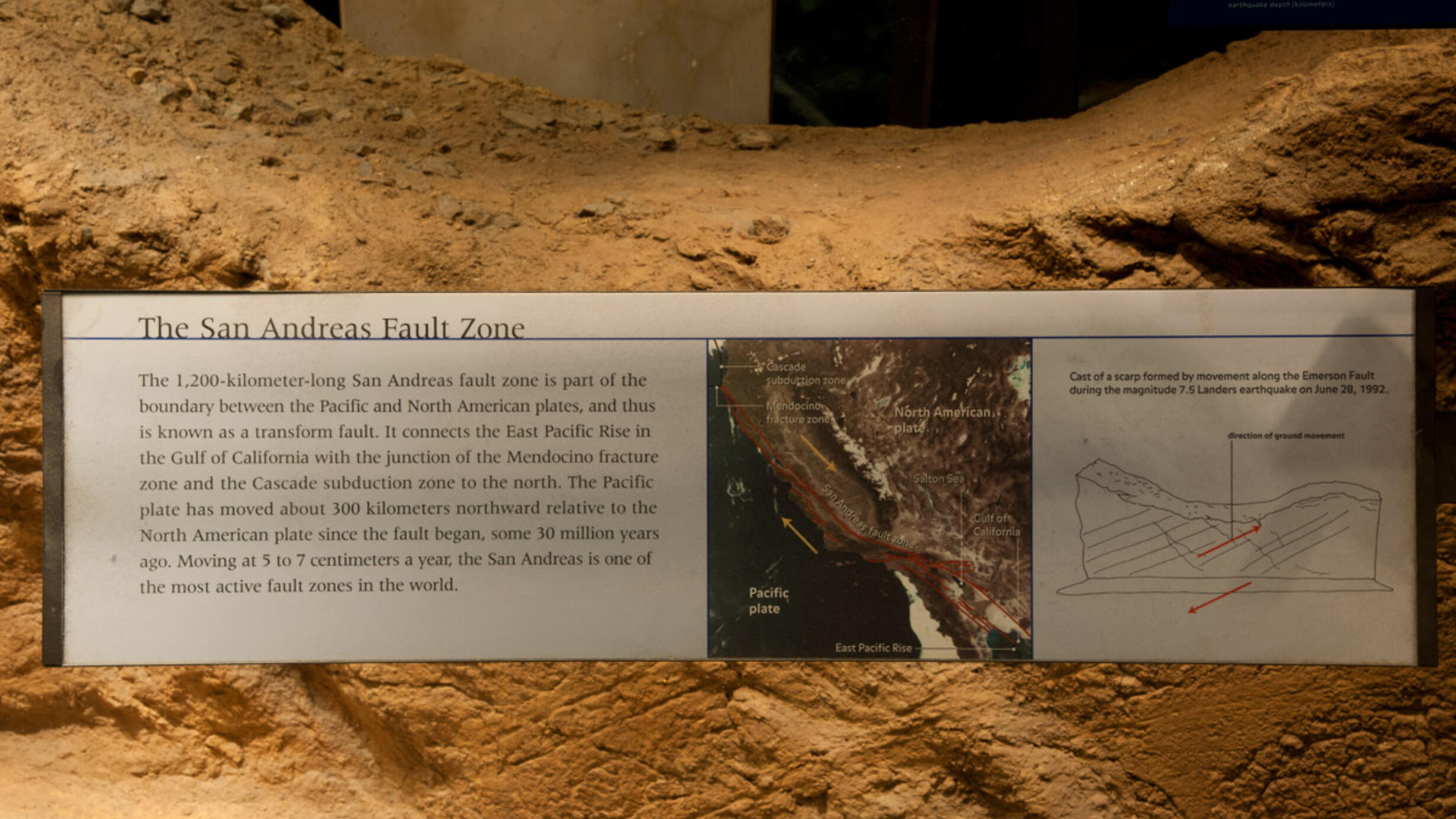The San Andreas fault zone
Part of Hall of Planet Earth.
Part of Hall of Planet Earth.
 AMNH/R.Mickens
AMNH/R.Mickens The 1,200-kilometer-long San Andreas fault zone is part of the boundary between the Pacific and North American plates, and thus is known as a transform fault. It connects the East Pacific Rise in the Gulf of California with the junction of the Mendocino fracture zone and the Cascade subduction zone to the north. The Pacific plate has moved about 300 kilometers northward relative to the North American plate since the fault began, some 30 million years ago. Moving at 5 to 7 centimeters a year, the San Andreas is one of the most active fault zones in the world.
Scientists at Work: San Andreas Fault
Most earthquakes occur at plate boundaries. Where plates spread apart, earthquakes are shallow and small. Where plates slip past each other, they are shallow but frequently large. The San Andreas Fault is one such boundary.
In the video below, Dr. Edmond Mathez from the American Museum of Natural History explores the San Andreas Fault in California with Dr. Tom Rockwell from San Diego State University.
This video was produced in 1999 for the David S. and Ruth L. Gottesman Hall of Planet Earth at the American Museum of Natural History.
Video credits:
American Museum of Natural History
Ballentyne Brumble Communications
Planet Earth - The Living Machine, WQED Pittsburgh